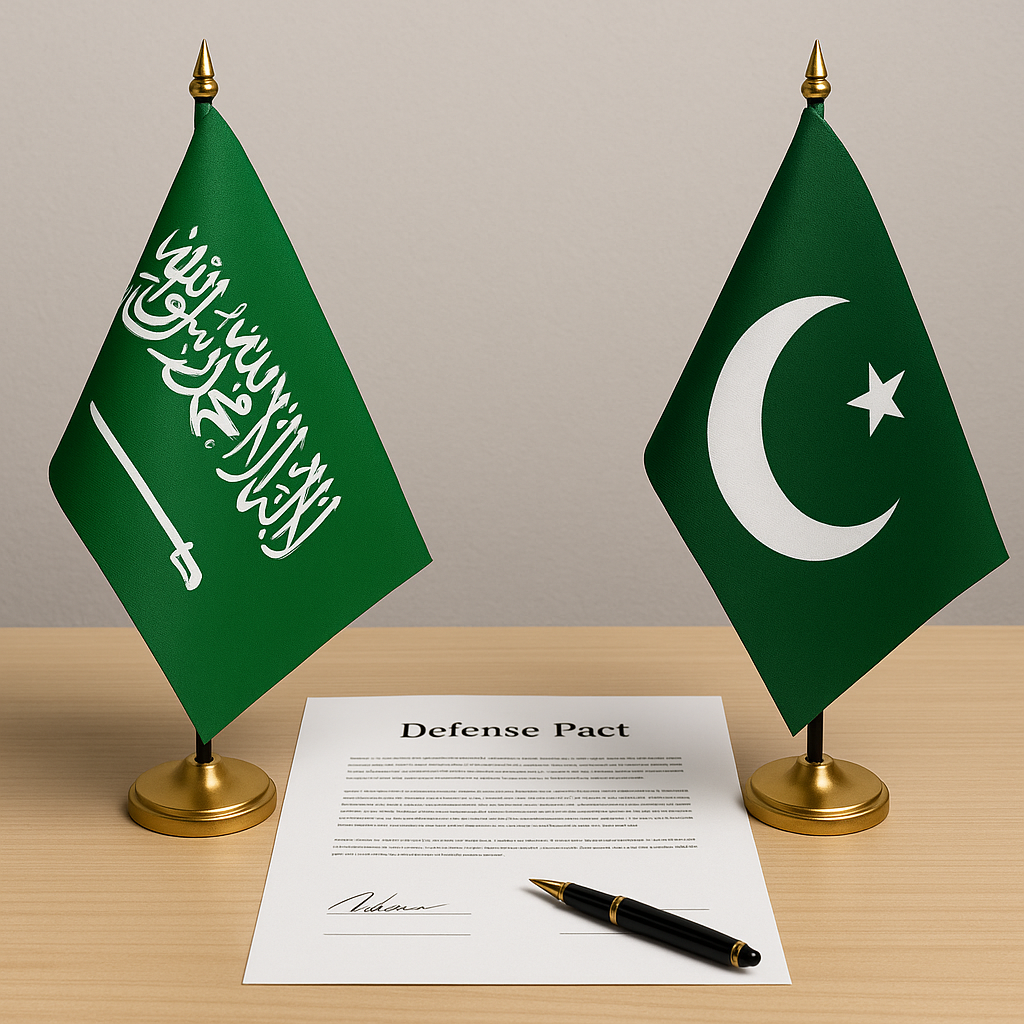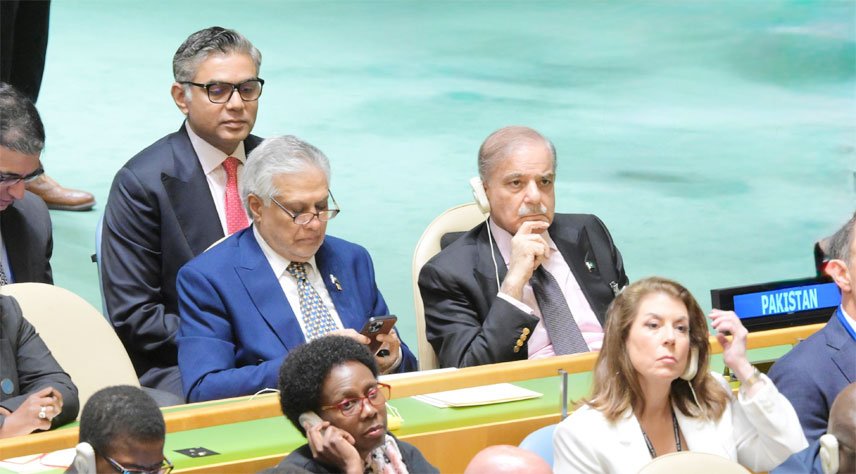Saudi-Pakistan Defence Pact: What It Really Means
A Complex Reality, Not an All-Out Challenge to Israel
Overview
On 17 September 2025, Pakistan and Saudi Arabia formalised a mutual defence agreement often being called the Strategic Mutual Defense Agreement. Central to this pact is the clause:
“Any aggression against either country will be considered an aggression against both.” (AP News)
This has sparked widespread attention — especially from analysts and media outside Pakistan — with many asking: Is this a hostile, even militarised, pact aimed at Israel or at a broader regional realignment? Or is it largely symbolic, meant for signalling rather than immediate military operations?
An opinion piece in The Jerusalem Post by Yoel Guzansky, titled “A complex reality: Saudi-Pakistani alliance is not a hostile pact against Israel”, argues the latter. Below, we unpack the key elements of the pact, the main arguments on both sides, and what this means for Pakistan, Saudi Arabia, Israel, and the wider region.
Key Facts of the Pact
- Mutual Defence Clause: As above, aggression against one is aggression against both.
- Objective: To strengthen cooperation in defence, enhance deterrence against threats, and signal resolve. Both countries emphasise “defensive” posture.
- Nuclear Dimension: Rumours and speculation about a nuclear umbrella for Saudi Arabia have circulated, especially since Pakistan is the only Muslim-majority nuclear-armed state. However, the pact as published includes no explicit reference to nuclear weapons. Pakistan’s doctrine continues to assert that its nuclear arsenal is directed at India.
- Existing Ties: Pakistan has had troops in Saudi Arabia, engaged in advisory, training, and internal security roles for decades. The new agreement is seen by many analysts as formalising existing cooperation rather than creating entirely new capabilities.
The Jerusalem Post Analysis
In his op-ed, Yoel Guzansky makes several points:
- Symbolism Over Substance: The agreement’s most striking clause (mutual defence) is dramatic on paper, but in practice, much of what it covers builds on long-standing Saudi-Pakistani relations.
- Nuclear Rumours versus Reality: Guzansky notes that although rumours persist, there is no textual support for Pakistan committing to a nuclear umbrella. Pakistan’s publicly stated policy remains focused on deterrence vis-à-vis India.
- Geopolitical Signalling: The pact is seen as a tool for signalling to multiple actors:
- to Iran: demonstrating Saudi Arabia is not isolated and has strong allies;
- to domestic audiences in both countries: showing strength and resolve;
- to Washington and other global powers: Saudi Arabia may be seeking more independent security options.
- Limits on Military Commitment: Guzansky underlines that Saudi Arabia is unlikely to intervene militarily in a Pakistan-India conflict under this pact. Prior instances show Pakistan has drawn red lines: e.g., refusing involvement in Saudi operations in Yemen in 2015. The pact does not override those past constraints.
Views from Pakistan and Saudi Officials
- Pakistan’s Defence Minister Khawaja Muhammad Asif has stated that the agreement is defensive and not aimed at any particular country.
- Officials have also said that nuclear weapons are not on the radar of this agreement, but language such as “comprehensive defensive agreement” and “joint deterrence against any aggression” leave room for interpretation.
Implications & Risks
For Pakistan
- Strategic Elevation: Pakistan is being seen more and more as a security guarantor in the Muslim-world geopolitics beyond South Asia.
- Nuclear Credibility & Ambiguity: While Pakistan officially maintains limits, the notion of nuclear deterrence being tied into Saudi defence could lead to diplomatic, strategic, and possibly even legal complications.
- Resource Commitment: Pakistan may be expected to commit more resources — training, forces, perhaps advisory roles, intelligence sharing. Whether operational or symbolic remains to be seen.
For Saudi Arabia
- Diversifying Security Partners: As US security guarantees are seen by many in the Gulf as less predictable, Saudi Arabia seems to be hedging with closer alliances.
- Diplomatic Balancing: Saudi Arabia must balance its relations with global powers, including the US, and neighbouring rivals like Iran, as well as with Israel. Open or too-explicit entanglement could have diplomatic costs.
For Israel & Others
- Perceptions Matter: Israel, likely its intelligence agencies, will be closely watching how “deterrence” is defined operationally. Even symbolic pacts can shift threat perceptions.
- Risk of Escalation: If either side misreads signals — for instance, interpreting Saudi-Pakistan defence posture as actually preparing for action against Israel — this could provoke counter-measures or pre-emptive responses.
- Diplomatic Channels: There may be an incentive for Israel to engage in strategic dialogue with Saudi Arabia (quiet diplomacy) to clarify intentions, especially if ambiguity grows.
Why It’s Not (Yet) a Hostile Pact Against Israel
From the public record and analysis so far, these points suggest the pact is not explicitly hostile to Israel:
- There is no text in the agreement that names Israel as a target. The wording is general: “aggression,” “threats,” “defensive cooperation,” “joint deterrence”.
- Pakistan’s nuclear doctrine remains India-centred. Pakistan has emphasized the nuclear dimension is not on the radar of this pact.
- Saudi involvement or commitment to intervene militarily is perceived by many analysts as unlikely in many scenarios (especially complex ones like India-Pakistan conflict) due to domestic, strategic, or diplomatic constraints.
Where Ambiguity Remains
- The precise operational details — what “defensive cooperation,” “joint deterrence,” or “aggression” mean in practice (which kinds of threats, from whom?) — are not clearly defined in public documentation.
- The nuclear issue, though officially dismissed, continues to be part of the regional conversation. How both parties interpret “all military means” or “deterrence” in the future may bring the nuclear dimension into sharper focus.
- How other regional actors (Iran, Israel, India) respond could either stabilize the arrangement or push it toward confrontation.
What Should Pakistan Do Next?
From a strategic perspective, Pakistan should consider:
- Clarify Public Messaging: Reinforce that the pact is defensive, not directed at any particular country, to avoid misinterpretation.
- Transparency & Diplomacy: Engage with regional and global powers to assure them that Pakistan does not seek expansionary or offensive plans.
- Realistic Commitments: Ensure that any resource or force commitment matches Pakistan’s capabilities, so the pact does not become a liability.
- Monitor Reactions: Carefully track how Saudi, Gulf, Indian, Israeli, and US media and governments respond, and adjust diplomatic outreach accordingly.
Conclusion
The Saudi-Pakistan defence pact is significant — perhaps more so for what it symbolises than what it concretely changes right now. It reflects evolving regional dynamics: weakened assurance from traditional powers, rising mutual anxieties, and a desire among Muslim-majority states to formalise defence cooperation.
But the evidence to date suggests this is not a hostile pact explicitly aimed at Israel. At least not yet. It is more of a signal — of strength, of alternatives, of deterrence — than a declaration of immediate military alliance against any one nation.



